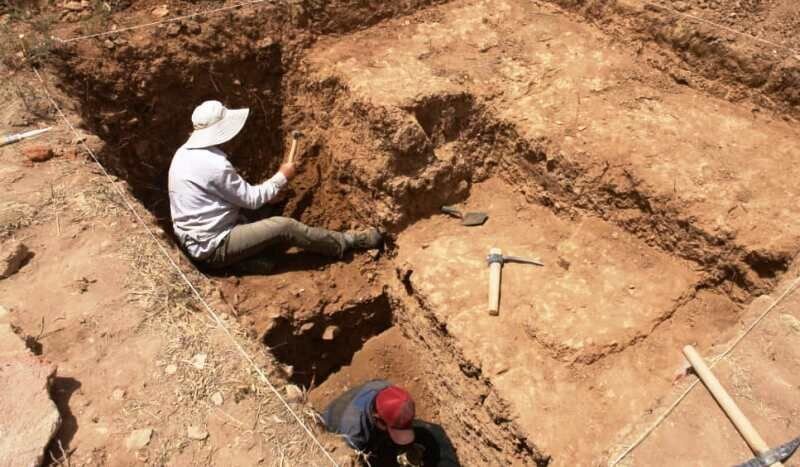Archaeologists probe ancient mysteries in Farahan Pian

TEHRAN - An archaeological survey is underway in Farahan Pian to investigate and identify Islamic-era elements in the ancient cultural region, which is situated in central Iran.
The primary focus of this project, led by archaeologist Ahmad Sohrabinia, is to uncover sites associated with the production of cultural materials, such as pottery, Mehr news agency reported.
Sohrabinia stated that the survey was initiated with permission from the Research Institute of Cultural Heritage and Tourism, and primarily intended to shed new light on the region’s history from the early Islamic period to the Safavid era.
The study area is located in Markazi province, encompassing the counties of Arak, Farahan, and parts of Tafresh and Ashtian.
Sohrabinia described the Farahan as one of the country’s most significant intermontane and transitional plains, situated between the eastern edge of the Central Zagros and the central Iranian plateau.
Covering an area of 90 by 90 kilometers at an elevation of 1600 to 1900 meters above sea level, the plain has long supported various human settlements due to its seasonal rivers and qanat systems.
Covering an area of 90 by 90 kilometers at an elevation of 1600 to 1900 meters above sea level, the plain has long supported various human settlements due to its seasonal rivers and qanat systems.A key natural feature in this region is Lake Meighan, which acts as a catchment area for surface waters during the winter, contributing to the area's unique ecological and cultural landscape, the archaeologist explained.
The research focuses on understanding the factors that influenced the continuity of settlement from the Sassanian period into the early Islamic centuries. It seeks to determine whether political or environmental factors played a more significant role in this transition.
Additionally, the team is examining historical texts, such as the 10th-century "History of Qom" by Mohammad bin Hassan Qomi, to locate and verify the sites mentioned within these works. So far, evidence such as kiln supports and kiln balls has been uncovered, indicating the existence of pottery production sites.
Sohrabinia emphasized that beyond uncovering the historical context, the survey aims to assess the current state of these sites and the threats they face. The findings will help inform efforts to protect and preserve these invaluable cultural heritage sites from further degradation.
The Farahan plain, located in the heart of Markazi province, is a fertile region of agricultural importance and lies strategically between the Iranian plateau and the Central Zagros Mountains, contributing to its significance both geographically and historically.
AM
Leave a Comment